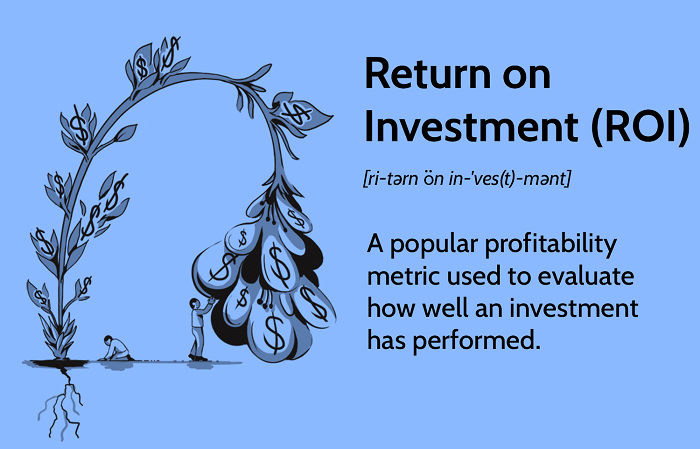Loans for home improvement provide homeowners with the opportunity to expand, renovate, or modernize their living spaces without the immediate financial burden. With a variety of loan options available, including home equity loans and personal loans, homeowners have the flexibility to choose a financing solution that fits their specific needs. These loans can not only increase the value of the property but also enhance the overall quality of life for residents.
One fresh perspective on home improvement loans is considering their potential to save money in the long run. While it may seem counterintuitive to take on debt in order to improve a home, making energy-efficient upgrades or repairs can lead to cost savings over time through reduced utility bills and maintenance expenses. Additionally, investing in high-quality materials and workmanship with a loan can contribute to longer-lasting renovations that require less frequent upkeep or replacement.
Another noteworthy point is that home improvement projects often yield emotional benefits beyond just financial returns. By creating personalized and comfortable living spaces, homeowners can enjoy increased satisfaction and pride in their homes. This emotional impact shouldn’t be overlooked when considering taking out a loan for home improvements, as these changes can contribute significantly to overall well-being and happiness.
In summary, loans for home improvement offer homeowners an opportunity not only to enhance their living spaces but also reap financial savings over time while providing tangible emotional benefits. With careful planning and consideration of long-term impacts, these loans can serve as an effective tool for creating lasting value within homes.
1. The Importance of Home Improvement Projects

Home improvement projects play a crucial role in enhancing the quality of life and increasing the value of your property. Investing in home improvements not only adds aesthetic appeal but also improves functionality and energy efficiency, making your living space more comfortable and enjoyable. Moreover, these projects offer an opportunity to customize your home according to your unique lifestyle and preferences, creating a sense of ownership and pride.
Furthermore, undertaking home improvement projects allows homeowners to address maintenance issues proactively, preventing potential costly repairs in the future. From updating kitchen appliances to renovating bathrooms or adding outdoor spaces, these projects can significantly elevate the overall appeal and functionality of a home. As such, they should be viewed as valuable investments that contribute to both personal well-being and long-term financial stability.
2. Types of Loans Available for Home Improvement
There are various types of loans available for home improvement, each catering to different financial needs and circumstances. One popular option is a home equity loan, which allows homeowners to borrow against the equity they have built in their property. This type of loan often offers lower interest rates and can be used for substantial renovation projects.
Another option worth exploring is a personal loan, which provides a more flexible borrowing alternative for those who may not have significant equity in their homes or don’t want to use their property as collateral. Personal loans can be secured or unsecured, depending on the borrower’s credit score and financial standing. They offer quick access to funds and are ideal for smaller-scale home improvements.
If you’re looking to finance energy-efficient upgrades such as solar panel installations or HVAC system replacements, consider an FHA Title I loan tailored specifically for home improvements that promote energy efficiency. These loans are backed by the Federal Housing Administration and provide accessible financing options to support eco-friendly enhancements that can benefit both your home and the environment.
3. Pros and Cons of Using Loans for Renovation

When it comes to financing home renovations, loans can be a valuable tool. One of the main advantages is that they provide a lump sum of money upfront, allowing homeowners to tackle large-scale projects without draining their savings. Additionally, loans offer flexibility in repayment terms, enabling individuals to spread out the cost over time and manage their budget more effectively.
However, using loans for renovation also has its drawbacks. One significant concern is the potential increase in overall debt burden, as monthly loan payments must be factored into household expenses. Additionally, taking on more debt may impact one’s credit score and limit future borrowing opportunities. It’s crucial for homeowners to carefully weigh these pros and cons before pursuing a renovation loan and explore alternative funding options that may better suit their financial situation.
4. How to Choose the Right Loan for Your Project
When it comes to choosing the right loan for a home improvement project, it’s crucial to carefully consider your specific needs and financial situation. One key factor to consider is the interest rate: a fixed-rate loan provides stability, while a variable-rate loan may offer lower initial rates but can increase over time. Additionally, you should assess your repayment ability and opt for a loan term that aligns with your planned budget and timeline.
Another important consideration is the type of collateral required for the loan. Some loans may be secured against your property or other assets, while others may be unsecured. Understanding the potential risks and benefits of each option will help you make an informed decision. Lastly, evaluate any additional fees or charges associated with the loan, such as origination fees or prepayment penalties. By weighing all these factors carefully, you can select a loan that best meets your project’s requirements while maintaining financial prudence.
5. Tips for Managing Loan Repayments Effectively

1. Create a Realistic Budget: Before taking out a loan for home improvement, it’s essential to create a realistic budget that includes not only the cost of the project but also the monthly loan repayments. By understanding your financial capabilities and setting strict spending limits, you can effectively manage your loan repayments without straining your finances. Consider cutting back on non-essential expenses to ensure that you have enough funds to cover your monthly installments.
2. Prioritize High-Interest Debts: If you have multiple loans or debts, prioritize paying off those with higher interest rates first. By focusing on clearing high-interest debts, you can save money in the long run and reduce the overall financial burden. This strategy allows you to allocate more funds towards your home improvement loan repayment while minimizing additional interest charges from other debts.
3. Communication with Lenders: In case of financial difficulties, don’t hesitate to communicate with your lenders proactively. Many lenders are willing to work with borrowers facing temporary hardships by offering alternative payment plans or restructuring options. By keeping an open line of communication and seeking assistance when needed, you can effectively manage your loan repayments without accruing penalties or damaging your credit score.
By implementing these tips for managing loan repayments effectively, you can navigate through the process of financing home improvements while maintaining control over your finances.
6. Risks to Consider Before Taking Out a Home Improvement Loan
Before diving headfirst into a home improvement loan, it’s crucial to weigh the potential risks involved. Firstly, consider the impact on your overall financial health. Taking out a sizable loan can strain your budget and may lead to increased debt if not managed carefully. Additionally, fluctuations in interest rates could significantly affect your repayment obligations over time, potentially making the loan more expensive than initially anticipated.
Furthermore, be mindful of potential property devaluation due to over-improvement. It’s essential to strike a balance between investing in upgrades that enhance value and those that may not provide a substantial return on investment. Lastly, examine the possibility of unforeseen expenses or project delays that could further escalate costs. By evaluating these risks thoroughly beforehand, one can make informed decisions about pursuing a home improvement loan while mitigating potential downsides.
7. Conclusion: Making Informed Decisions about Home Improvement Financing
In conclusion, making informed decisions about home improvement financing is crucial for ensuring a successful and stress-free renovation process. By carefully considering the various options available, such as personal loans, home equity loans, or lines of credit, homeowners can find the best fit for their financial situation and renovation needs. It’s essential to fully understand the terms and conditions of each financing option to avoid unexpected costs or complications down the line.
Additionally, seeking guidance from financial advisors or loan experts can provide valuable insights and help homeowners navigate the complexities of home improvement financing. Ultimately, by weighing the pros and cons of each option and carefully assessing one’s budget and repayment capacity, individuals can make confident decisions that support their home improvement goals without causing undue financial strain. Informed decision-making empowers homeowners to embark on their renovation projects with clarity and peace of mind, knowing that they have secured suitable financing that aligns with their long-term financial well-being.
Questions to consider before starting a home project
What are your objectives?

When it comes to home improvement, the objectives can vary widely from one homeowner to another. For some, the goal may be to increase the property value for a future sale, while for others, it’s about creating a more comfortable and aesthetically pleasing living space. However, regardless of the specific objective, obtaining a loan for home improvement can provide the financial means to achieve these goals effectively. Whether it’s updating an outdated kitchen or adding an extra bedroom for a growing family, having clear objectives in mind is crucial when considering a home improvement loan.
One important objective to consider when seeking a home improvement loan is ensuring that the renovations will not only enhance your quality of life but also yield a positive return on investment. This means carefully evaluating which upgrades are most likely to add value to your property and aligning your loan objectives with these strategic improvements. Additionally, setting realistic budgetary objectives and timeline expectations can help ensure that you make informed decisions about how much financing is needed and how long the repayment process may take. Ultimately, by clarifying your objectives before applying for a home improvement loan, you can maximize its impact and achieve lasting benefits for both your home and your financial well-being.
What are your projected costs?
When embarking on a home improvement project, it’s essential to carefully consider and project the costs involved. From materials to labor, permits, and unexpected expenses, the projected costs can quickly add up. It’s crucial to conduct thorough research and obtain quotes from multiple vendors before finalizing your budget. Additionally, factoring in a contingency fund for unforeseen circumstances can provide peace of mind during the renovation process.
Furthermore, considering long-term costs is also vital when taking out a loan for home improvement. It’s important not only to account for immediate expenses but also to evaluate how the changes will impact maintenance and utility costs in the future. By thoroughly projecting these costs beforehand, homeowners can make informed decisions about their renovation plans and obtain loans that align with their financial needs. Remember that being patient throughout this planning phase can save significant stress and money down the line.
What is your expected return on investment (ROI)?

When considering loans for home improvement, one crucial factor to assess is the expected return on investment (ROI). This metric helps homeowners gauge the potential value their renovations might add to their property. While specific ROI figures can vary based on factors like location and market trends, certain projects generally yield higher returns. For example, kitchen and bathroom renovations often offer substantial ROI due to their impact on a home’s functionality and aesthetic appeal.
It’s important to note that while ROI is a critical consideration, it should not be the sole deciding factor when choosing home improvement projects. Other factors such as personal enjoyment, comfort, and long-term goals should also play a role in decision-making. Additionally, engaging with real estate professionals or conducting thorough market research can provide valuable insights into expected ROI for specific renovation projects in your area. Ultimately, understanding the potential return on investment can help homeowners make informed decisions about which home improvements are worth pursuing.
 london finance
london finance
